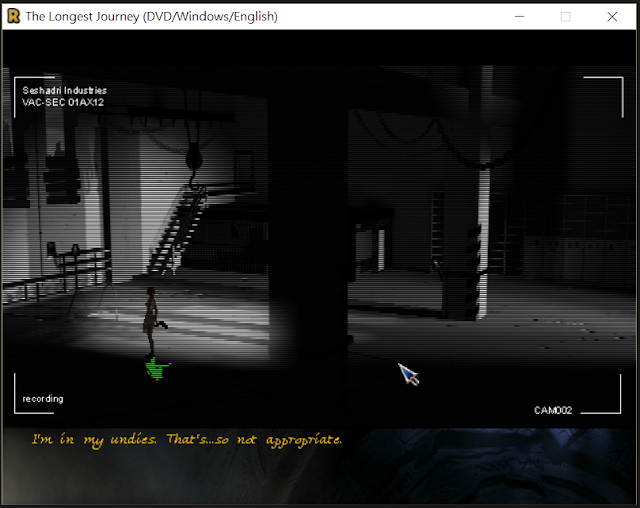ResidualVM: Week 10
And I said: "Let there be shadows!" And there are shadows. Just, not good enough...
So, from this week till the end of GSoC I guess I'll be dealing with OpenGL. As a newbie to computer graphics, I would be lying if I say that I am not worried at all. I once believed that OpenGL hated me, it hated me so much that it didn't even want me to render a tessellated triangle on the screen. But that hard time is passed now and I am happy that I start to get along well with OpenGL, and it is kind enough to let me produce something physical this week.
 |
| Ah, the shadow. |
Okay, shadows. Actually what I have done so far is based on my previous wrong assumption about shadows in The Longest Journey. In most of the scenes I have played, which is not many actually, characters have shadows that look like they are cast from above. The Longest Journey is a 2.5D game with 3D characters and 2D backgrounds, so, in my personal perspective as a CG newbie, it won't be that intuitive to perform a full shadow casting technique like the Shadow Mapping here. But if shadows are just cast from above, then things are a lot simpler.
So, with this "wrong" assumption, and the fact that the original game doesn't seem to have complex and realistic shadows, I decided to use the simplest shadow casting technique: Planar Shadow. Basically, it just squishes the modal onto a surface and paints it grey. Since I just want to cast the shadow from above, the squishing is even easier. Below is a screenshot when I was testing how I could squish the model.
 |
| April: I don't feel so good... |
That's not the whole story. A good shadow should be semi-transparent. But simply enable blending is not enough since transparent faces will cover on each other, and there will be the Z-fighting problem. The solution is intuitive though: stencil test. With the enabling of the stencil test and proper manipulation on the stencil buffer (no two shadow fragments can be drawn on the same location), a nice semi-transparent shadow is produced.
 |
| Blending and Stencil Tet |
Well, like I said before, this is a wrong assumption. The Longest Journey does compute shadows from existing lights. And there are three types of light in the game: point light, directional light and spotlight. Luckily lights only contribute to the length of the shadow, so right now I think the Planar Shadow technique can still be used.
From the look of it right now, I guess it is time for some linear algebra. More updates will come next week.
All code snippets are generated through Carbon



Comments
Post a Comment